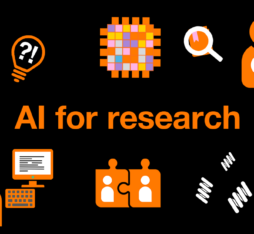● Recent studies have shown that language models such as GPT-4o can exhibit changes in attitude similar to those observed in humans, including behaviours consistent with cognitive dissonance.
● At MIT and the University of Washington, researchers are integrating models of irrational behaviour into AI assistants to improve their ability to interact with humans.
Will AI agents soon be able to pass themselves off as human and perform professional and personal tasks with human-level subtlety? A research team from the Institute for Human-Centered AI (HAI) at Stanford has recently reported that “AI agents can be used to simulate complex human behaviours, offering unprecedented opportunities for modelling and predicting human action.” This is one of the key takeaways from a project that successfully developed an architecture for generative AI agents which enabled the researchers to simulate the attitudes and behaviour of 1,000 real individuals: a technological innovation that could have a considerable impact in a range of fields including psychology, sociology, and economics. As the scientists point out, “Simulating human behaviour with AI agents will enable us to better understand social dynamics and to develop more effective interventions.” In the future, tools of this kind could, for example, be used to evaluate the impact of public health messages. At the same time, their deployment in the field of marketing is a chilling prospect.
The LLM developed an analogue form of humanlike cognitive selfhood
Large language models (LLMs) like GPT-4o, which increasingly process information in ways that cannot be described as neutral, are beginning to manifest strangely humanlike behaviour. Earlier this year, researchers conducted two studies to see if GPT-4o changed its attitude to Vladimir Putin in the direction of a positive or negative essay it wrote about the Russian leader. The results showed that GPT-4o effectively manifested changes in attitude like those observed among humans. Even more remarkably, these changes were more pronounced when the AI was offered an illusion of choice about which essay (positive or negative) to write, leading the researchers to conclude: “We demonstrate that GPT-4o displays behaviours consistent with cognitive dissonance, a deep and not always rational feature of human cognition. […] We conclude that the LLM has developed an analogue form of humanlike cognitive selfhood.”
Behavioural anomalies caused by training data
“The data used to train these neural networks are produced by humans, and as such are marked by human behavioural patterns (for example, the patterns of conversation) and human knowledge structures that AIs tend to reproduce. At the same time, the use of this data is also the reason why models may also reflect human cognitive and social biases,” explains Moustafa Zouinar, a researcher at Orange Laboratory for Human and Social Sciences. He further adds that appearance of such phenomena is an unintended consequence of a complex probabilistic process for the optimisation of weights, and warns that similarities between human cognitive functioning and artificial intelligence should not lead us to jump to conclusions. “Just because two systems produce exactly the same behaviours (at a functional level) doesn’t mean they function in exactly the same way (at an ontological level).”
AIs schooled in irrationality that better understand humans
However, as their authors point out, the results of these studies demonstrate that AI models may mirror more deep-seated aspects of human psychology than was initially assumed. “Some systems are even deployed with special adjustments and finetuned models so that they behave more like humans,” notes Moustafa Zouinar. And given that decision-making, and notably human decision-making, is not always optimal, researchers at MIT and the University of Washington set out to model conditions that give rise to irrational behaviour to enhance the ability of AI assistants to simulate and anticipate poor decisions, making them better able to interact with humans and underpowered AI agents. The method developed by the team automatically deduces agents’ computational constraints by observing their previous actions in iterative processes to create a latent inference budget model that may be used to predict their future behaviour.
This method can be used to deduce an agent’s or human’s navigation goals from previous routes and to predict their subsequent moves in chess games. In the future, this research could enable AIs to better anticipate human mistakes and also to improve reinforcement learning methods, commonly used in robotics and other fields.
 Moustafa Zouinar
Moustafa Zouinar











